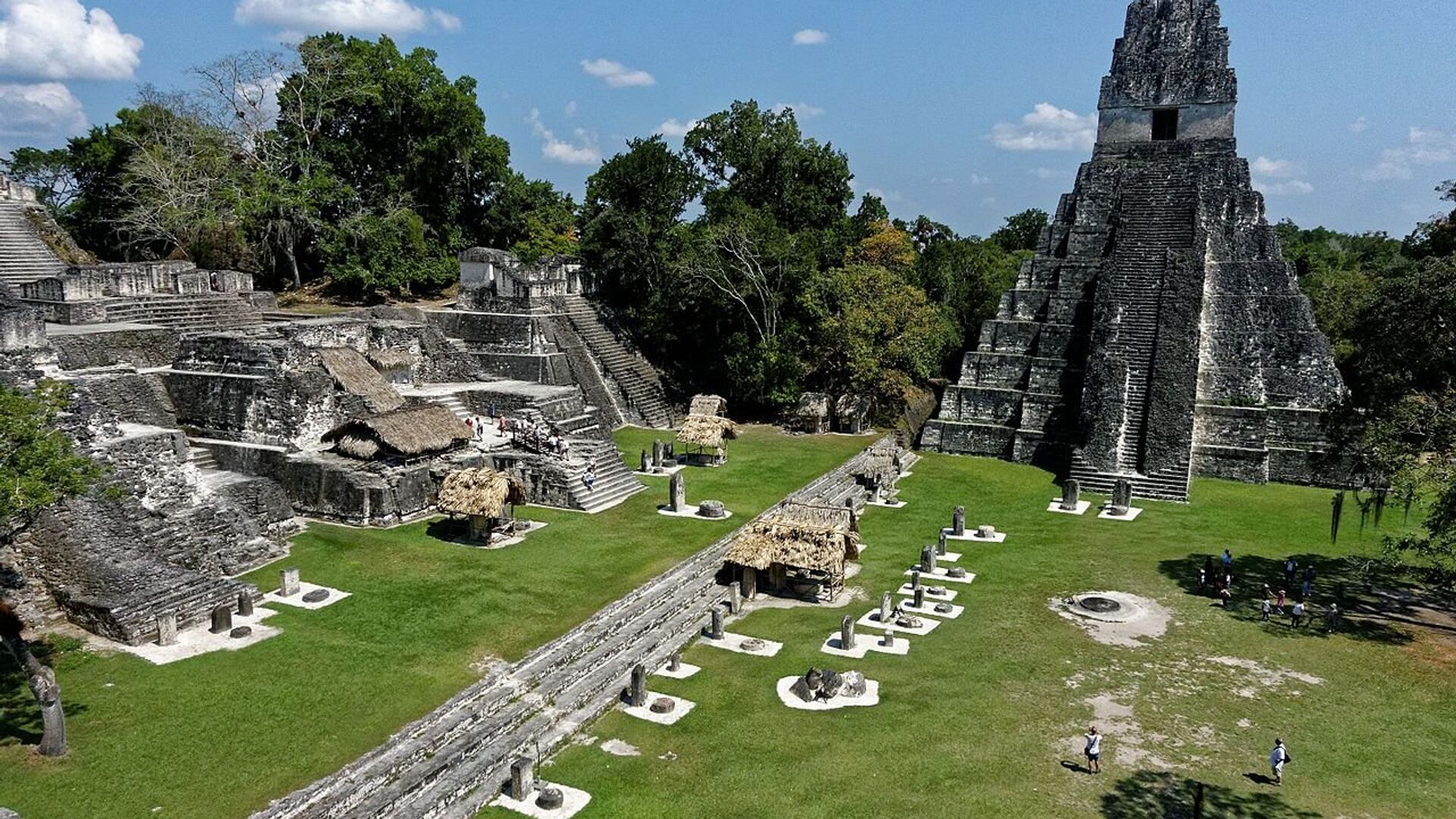https://sputnikglobe.com/20220926/mercury-pollution-that-could-still-pose-a-health-hazard-found-at-ancient-mayan-ruins-1101239144.html
Mercury Pollution That Could Still Pose a Health Hazard Found at Ancient Mayan Ruins
Mercury Pollution That Could Still Pose a Health Hazard Found at Ancient Mayan Ruins
Sputnik International
Mercury concentrations appeared to vary from site to site, and in some cases seemed to exceed the Toxic Effect Threshold of mercury in sediments. 26.09.2022, Sputnik International
2022-09-26T13:48+0000
2022-09-26T13:48+0000
2022-09-26T13:49+0000
science & tech
maya
ruins
mercury
pollution
study
https://cdn1.img.sputnikglobe.com/img/106132/15/1061321552_0:67:1280:787_1920x0_80_0_0_514fd238dcef4742e095f7d6dad0217d.jpg
Traces of mercury pollution that may pose a hazard to archaeologists in some instances have been discovered at ancient Mayan ruins in Central America, according to a study published in Frontiers in Environmental Science, a peer-reviewed journal.Said pollution does not seem to be a modern development but rather appears to be the product of the Mayan people’s prolific use of the heavy metal in question and of the products it contains, during the Classic Period between 250 and 1,100 AD.The sites examined by the researchers exhibited various levels of mercury concentrations that ranged from 0.016 ppm at the Actuncan site in Belize to 17.16 ppm at the famous Tikal ruins in Guatemala. As the journal points out, the Toxic Effect Threshold (TET) of mercury in sediments is “defined as 1 ppm”.The new study points at cinnabar and “mercury-containing paints and powders” that Mayans used for decoration as the likely culprit, as that mercury could eventually leach from surfaces it was originally applied to and into the soil and water.“For the Maya, objects could contain ch’ulel, or soul-force, which resided in blood,” said Dr. Nicholas Dunning, professor at the University of Cincinnati and co-author of the study. “Hence, the brilliant red pigment of cinnabar was an invaluable and sacred substance, but unbeknownst to them, it was also deadly and its legacy persists in soils and sediments around ancient Maya sites.”
https://sputnikglobe.com/20220324/machu-picchus-name-might-be-wrong-as-study-second-guesses-moniker-of-famed-unesco-site-1094148802.html
Sputnik International
feedback@sputniknews.com
+74956456601
MIA „Rossiya Segodnya“
2022
Sputnik International
feedback@sputniknews.com
+74956456601
MIA „Rossiya Segodnya“
News
en_EN
Sputnik International
feedback@sputniknews.com
+74956456601
MIA „Rossiya Segodnya“
Sputnik International
feedback@sputniknews.com
+74956456601
MIA „Rossiya Segodnya“
science & tech, maya, ruins, mercury, pollution, study
science & tech, maya, ruins, mercury, pollution, study
Mercury Pollution That Could Still Pose a Health Hazard Found at Ancient Mayan Ruins
13:48 GMT 26.09.2022 (Updated: 13:49 GMT 26.09.2022) Mercury concentrations appeared to vary from site to site, and in some cases seemed to exceed the Toxic Effect Threshold of mercury in sediments.
Traces of mercury pollution that may pose a hazard to archaeologists in some instances have been discovered at ancient Mayan ruins in Central America, according to a
study published in Frontiers in Environmental Science, a peer-reviewed journal.
Said pollution does not seem to be a modern development but rather appears to be the product of the Mayan people’s prolific use of the heavy metal in question and of the products it contains, during the Classic Period between 250 and 1,100 AD.
“Mercury pollution in the environment is usually found in contemporary urban areas and industrial landscapes,” said Dr. Duncan Cook, associate professor of Geography at the Australian Catholic University and lead author of the new study. “Discovering mercury buried deep in soils and sediments in ancient Maya cities is difficult to explain, until we begin to consider the archeology of the region, which tells us that the Maya were using mercury for centuries.”
The sites examined by the researchers exhibited various levels of mercury concentrations that ranged from 0.016 ppm at the Actuncan site in Belize to 17.16 ppm at the famous Tikal ruins in Guatemala. As the journal points out, the Toxic Effect Threshold (TET) of mercury in sediments is “defined as 1 ppm”.
The new study points at cinnabar and “mercury-containing paints and powders” that Mayans used for decoration as the likely culprit, as that mercury could eventually leach from surfaces it was originally applied to and into the soil and water.
“For the Maya, objects could contain ch’ulel, or soul-force, which resided in blood,” said Dr. Nicholas Dunning, professor at the University of Cincinnati and co-author of the study. “Hence, the brilliant red pigment of cinnabar was an invaluable and sacred substance, but unbeknownst to them, it was also deadly and its legacy persists in soils and sediments around ancient Maya sites.”


